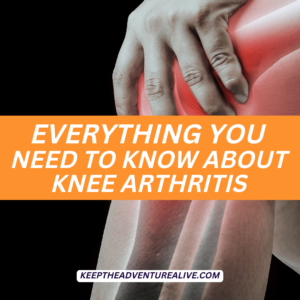Knee pain going down stairs is common and that is for a few reasons. Whether you have knee osteoarthritis, a past knee injury, meniscus injury or past knee replacement, going down the stairs may be more difficult than going up. If that is true, there are 3 secrets that can help you go down the stairs without thinking about it and with ease. It is possible!
If you’re dealing with knee pain, going down the stairs may seem impossible. It may also seem like you’ll have to live with it forever.
Reality is, it is possible to get better at going down the stairs! You just need to focus on the right strategies to help build exactly what you need to support your knees.
In my signature membership, Adventurers for Life, members have not only reduced knee pain when going down stairs but they have gained confidence too. Members have varying degrees of knee osteoarthritis, meniscus injuries, loss of knee mobility and/or a history of total knee replacement.
Take a look at what can be possible for you ⬇️


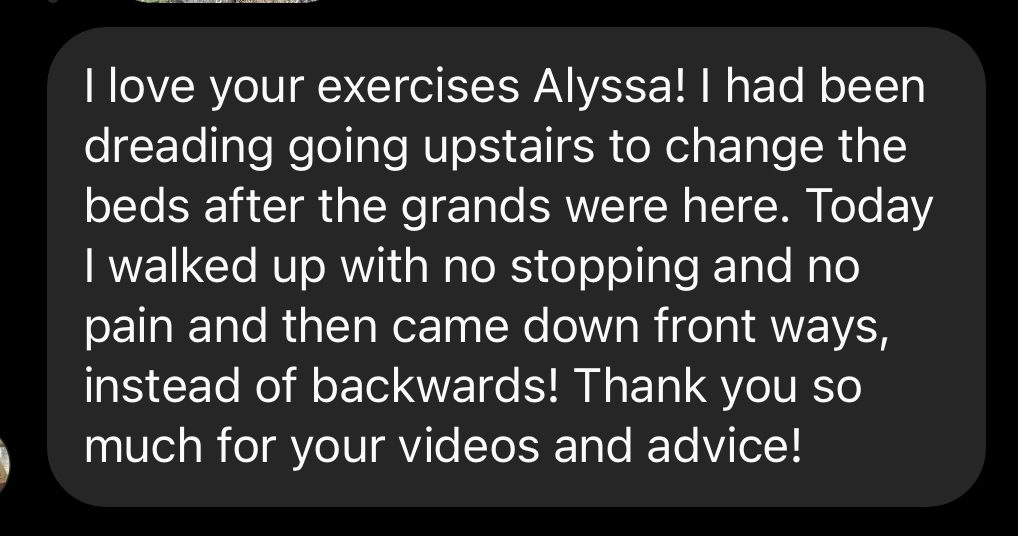


Why do you have knee pain going down stairs?
I am a firm believer that if you know why something is happening, you will be much more motivated to stick with the treatment. So let’s first dive into why going down the stairs can be difficult:
(Please note this is not an exhaustive list but as a physical therapist, these are common reasons I see)
Odds are you will have a few of these factors that contribute to your current difficulty.
Limited range of motion
When you climb down the stairs you need your joints to move properly. Contrary to popular belief, it’s not just your knee that you need to look at (yes, even if you have KNEE pain). Limited range of motion in other joints can contribute to knee pain.
Joint mobility you need to be successful going down the stairs:
Unable to accept full body weight
The figure below breaks down what is necessary for going down the stairs.
Especially if you have knee osteoarthritis, weight acceptance (the first step circled in blue)- this can be one of the most difficult parts.
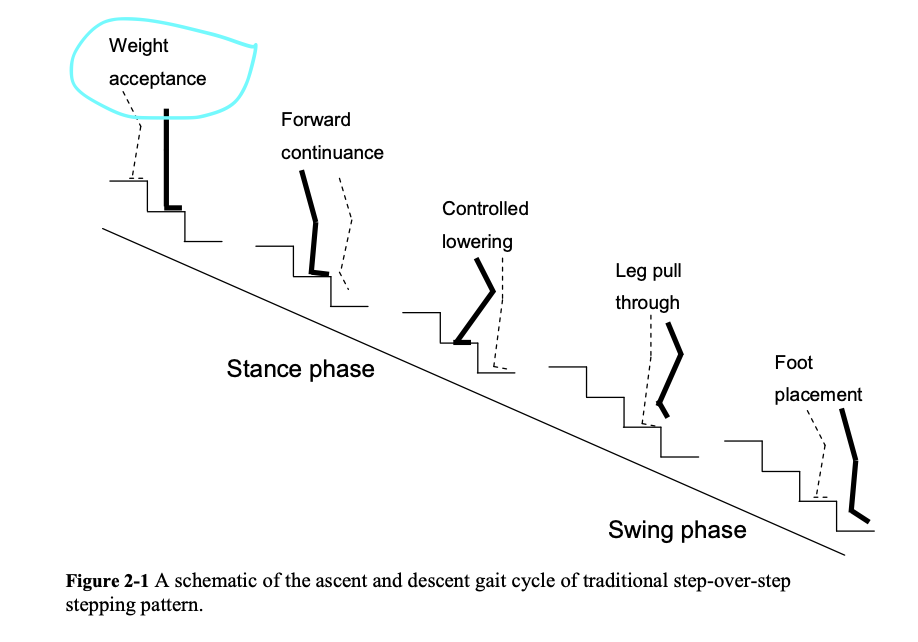
Think about it. Are you hesitant to put full weight through one leg because of pain, weakness, instability and/or fear of it giving out? Are you afraid your leg won’t hold you up, especially on the stairs?
If you aspire to go down the stairs one after the other, this is critical. You have to be able to put full weight on each leg. Without this ability, you will continue to go down one at a time.
Lack of control
When going down the stairs, you not only need strength but you need control. One of the most difficult parts of going down the stairs is the “controlled lowering” that you see circled in the figure below.
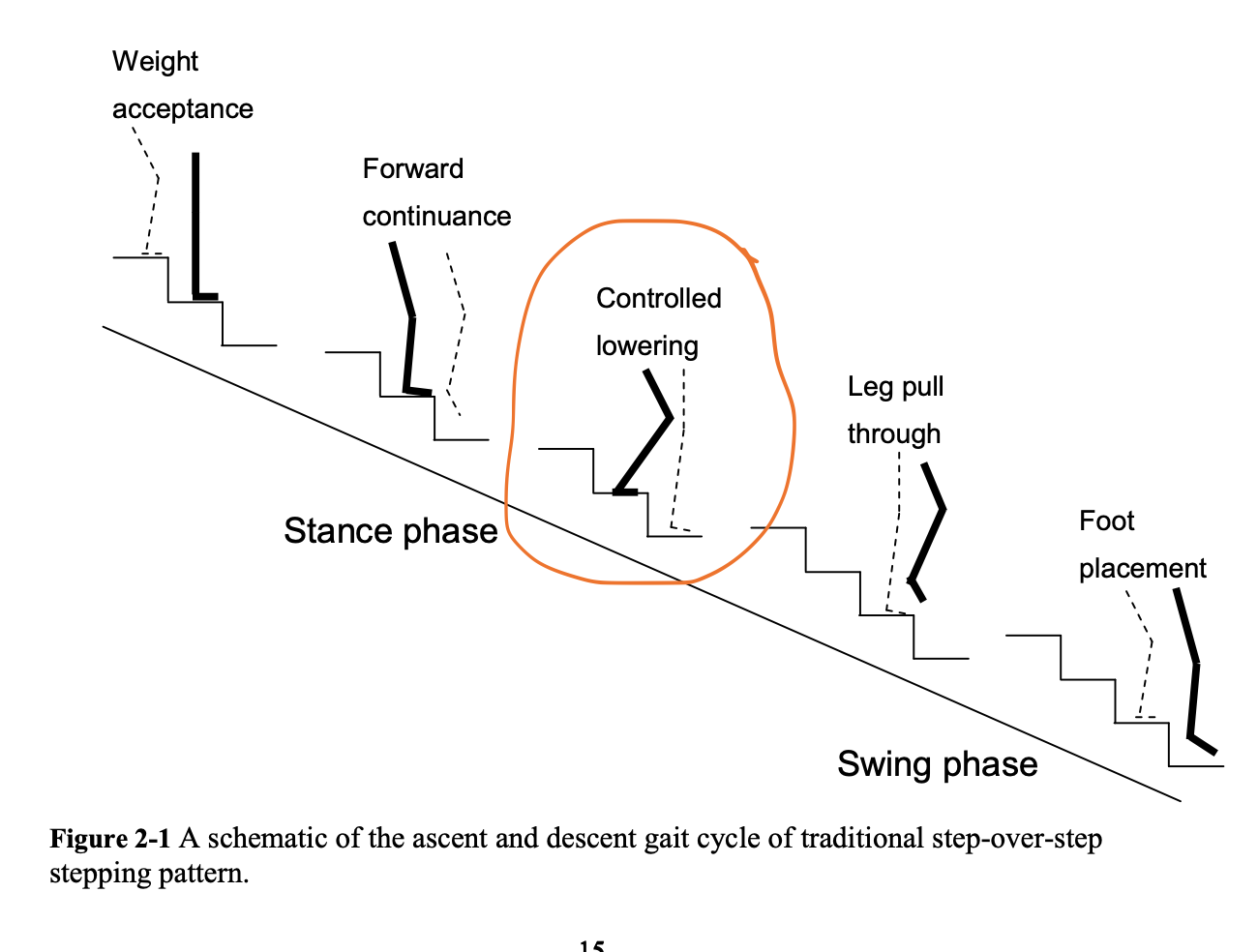
You have to have the strength to slowly lower your bodyweight with each descending step you take.
I like to think about it like this first. Are you able to sit down slowly in a chair or do you find yourself “plopping” down? If you plop down or have to sit down quickly- this controlled lowering on the stairs will be difficult.
Limited single leg strength
This is a continuation of the previous reason. If you are able to control yourself down into a chair and still have knee pain going down stairs, you may not have adequate single leg strength.
Do you have one leg that is stronger than the other? If you aren’t sure, this exercise below can be a great test.
If you have one leg that isn’t as strong as the other and you are looking to go down the stairs one after the other- you will likely have difficulty. The goal is to have relatively similar strength levels in both legs.
3 Secrets to Master Going Down the Stairs with Ease
In order to master going down the stairs with ease you need to follow these three strategies. Without action, stairs will likely continue to be a challenge. Here’s to day one of working on tackling the stairs.
1. Increase confidence on one leg
As we discussed above, you must be confident putting full weight on each leg in order to master going down the stairs with less pain. So what do you do right now if it is difficult to trust your leg to put full weight on it? Start practicing it!
There are TONS of ways to practice this. The key is finding a movement that doesn’t flare up pain. First you want to master standing on one leg then stepping with the other like in this video below.
⚠️ When trying any new movements, always use appropriate support to ensure safety.
Once you can master single leg stepping, then focusing on applying that directly to stairs can be helpful- an example in the video below.
You must make sure you continue to progress the exercises in order to continue to see success, especially to relieve knee pain going down stairs.
This is why inside of my membership, Adventurers for Life, there is an entire Level dedicated to improving stair climbing with full follow along workouts. If you’re ready to take the fast track and get started right now- become a member today.
2. Strength + control
Once you can master accepting full weight on each leg without hesitation or anticipation of pain, the next step is working not only on strength but control.
Like we discussed above, working first on sitting down slowly in a chair can be a great place to start. Once you can master a few repetitions of this movement- you can progress to the single leg chair squat (the video in the ‘Limited Single Leg Strength” section). This is one of my absolute favorite movements to start with.
Please recognize that mastering this specific movement isn’t the key to the kingdom. It can certainly be a fabulous start but it’s not the end all be all.
You have to continue to challenge single leg strength in different ways to continue to increase the strength and control you have. This is especially important when encountering steeper steps or high volumes of stairs (i.e when traveling).
This is why having a step by step pathway to follow to help you continue to increase the difficulty of movements without flaring up your knee pain is very important. This is also the exact reason members of Adventurers for Life have found success in tackling the stairs.

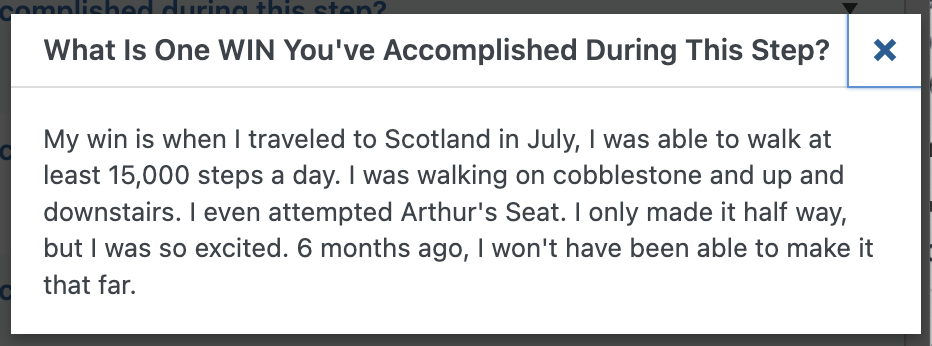
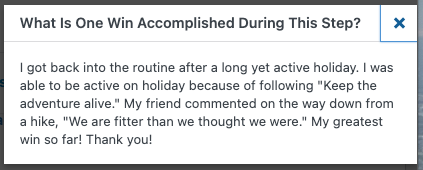
3. Consistent practice
If you are serious about your journey to reduce knee pain going down stairs, consistency is key.
When you’re building strength, confidence and control- results may not be immediate. The key is recognizing small wins that continue to motivate you to keep going.
The goal would be to complete a movement or a workout that will bring you closer to going down the stairs with ease everyday or every other day.
Here are specifics to focus on:
- Confidence putting weight on one side
- Range of motion
- Single leg strength
- Single leg control
Practice makes perfect. Continuing to practice going down the steps when it flares your knee pain is not the best activity to keep repeating in hopes it will just get easier.
Find movements that allow you to practice parts of the activity without flaring up your knee pain and you will catapult your success.
If you need help and are serious about getting better at stairs, your next step is to join Adventurers for Life. There is nothing to lose and SO MUCH to gain.
Conclusion
Relieving knee pain going down stairs is possible with the right strategies. You must look at why stairs are difficult and then address each reason properly. The primary reasons for difficulty including lack of strength, limited range of motion, lack of confidence and/or pain.
But guess what? You can do this. It is possible to get better. Yes, even if you have bone on bone knees. The key is taking the right action.
Remember: You have so much potential but without taking action, you may never bring it to light.
Alyssa Kuhn
References:
Reid, Samantha M.. “Stair Negotiation in an older adult population: Analysis of the lower limb.” (2010).

If you are looking to regain your active life but are unsure where to start, join the revolutionary membership, Adventurers for Life. This is a step-by-step path that not only will help you find pain relief but will help you unlock adventure. You’ll get workouts, tests to pass to make sure you are on the right track, community events and MORE.
Disclaimer: This post is for general informational purposes only. It should not be used to self-diagnose and it is not a substitute for a medical exam, cure, treatment, diagnosis, and prescription or recommendation. It does not create a doctor-patient relationship between Dr. Kuhn and you. You should not make any change in your health regimen or diet before first consulting a physician and obtaining a medical exam, diagnosis, and recommendation. Move Well Age Well, LLC and Dr. Alyssa Kuhn, PT, DPT are not liable or responsible for any advice, course of treatment, diagnosis or any conclusions drawn, services or product you obtain through this post, video or site. Complete all exercises at your own risk.

